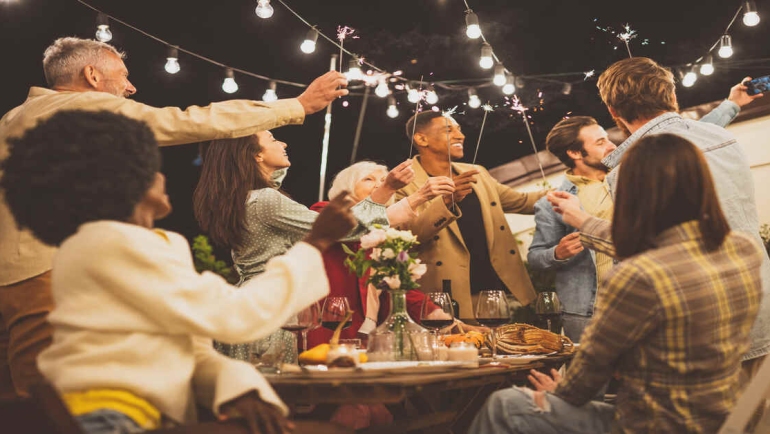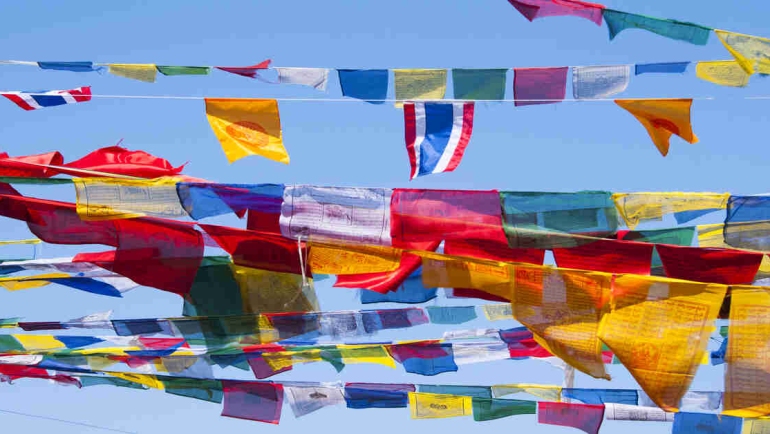Festival Culture November 12, 2025

8 Festival Traditions Unique Practices? Feel the Global Magic
Festivals transcend mere festivities, serving as vibrant portals to cultural souls worldwide. Festival Traditions Unique Practices showcase humanity’s diverse expressions, from rhythmic South American parades to serene Asian lantern releases, weaving history, values, and unity into living narratives. These events not only entertain but also bridge generations, transforming everyday spaces into enchanting realms of shared joy and collective memory.
These events are not merely entertainment events but rather uniting of generations, safeguards of cultural memory and turn common spaces into magic worlds of collective experience.
South America: Rhythm, Color, and Community
Carnival in Brazil is known to be legendary with its spectacular parades, elaborate costumes and catchy samba beats. However, behind the spectacle is centuries of blending cultures: the African drumming, Portuguese Pageantry and indigenous symbolism blend into one heartbeat of millions of people. Here, the tradition of festivals is a source of entertainment as well as preserving history of the past. This colorful festival is an ideal example of Festival Traditions Unique Practices, which include movement, musical performance, and visual storytelling and provide an all-enveloping cultural experience.
In Peru, the Sun God of the Andes is celebrated in the Inti Raymi festival in the Andes, where people wear colorful costumes, perform religious dances, and use ancient ceremonies. The festival is a spectacle that takes both the locals and visitors into a heritage, spiritual and pageant performance, which shows how the festivals can be used to maintain history even as it welcomes modern-day involvement.
Asia: Spirituality in Motion
Asia is home to some of the most striking festivals in the world. Loi Krathong in Thailand is a festival that floods rivers with lanterns, a symbol of relief of the bad luck and invitation of fortune. The soft light of the thousand lanterns will turn the waterways into eager corridors depicting how Festival Traditions Unique Practices could mix the arts with the deep culture.
The Holi- Festival of Colors in India welcomes the spring with a riotous showering of powder, singing and dancing. The rituals of Holi go beyond being fun; they are all about forgiveness, renewal, and the good winning over the evil. Communities through these practices re-establish a connection and transmit centuries-long tradition in an energetic, participatory manner.
Europe: Folklore and Celebration
Europe is a mosaic of traditions which are intertwined with history and folklore. In Spain, La Tomatina is a boisterous ritual in which people in the town hurl tomatoes at each other. The festival appears to be whimsical at first sight, but it is strongly connected with the local traditions and seasonal cycles, which brings out the playful aspect of Festival Traditions Unique Practices.
Oktoberfest is a mixture of beer, music as well as the Bavarian dress that is celebrated in Germany as a way of celebrating harvest and the locality. The festival, though having acquired a worldwide dimension, has still retained its historical spirit, proving that traditions that are many centuries old can be changed while preserving the iconic artists’ cultural impact embedded in the folklore.
Africa: Rituals, Rhythm, and Reverence
In Africa, music, dance, and spiritual observance are usually woven in many festivals. The Osun-Osogbo festival of Nigeria is a celebration of the goddess of fertility through drumming, processions and offerings. The involvement is shared, strengthening the social connections and cultural memory. This combination of art, ritual, and community is a good illustration of Festival Traditions Unique Practices with every gesture symbolic and part of a common cultural narrative.
Ethiopia on the Timkat, the festival of Epiphany, turns rivers, lakes, and waterways into platforms where processions, water blessings, and singing take place. The festival is a good example of how traditional events can combine religion and identity with mass celebration.
Oceania: Nature and Heritage
Nature and ancestry are commonly related to the festivals in Oceania. The Māori people in New Zealand celebrate the Māori New Year, Matariki, through narration, dancing and viewing the Pleiades group of stars. Such meetings retain the past and strengthen cultural identity and exhibit the way Festival Traditions Unique Practices respect the environment and make people seem to be in relation to their ancestors.
Art, dance and song play a role in Aboriginal ceremonies throughout Australia as they are used to pass ancestral tales and maintain cultural continuity. Such practices underscore the longevity of festivals to maintain intangible heritage in a manner that is dynamic and living.
North America: Fusion and Cultural Memory
There is an abundant festival world of multicultural societies in North America. The New Orleans Mardi Gras is a mixture of French, African, and Caribbean culture with its parades, music, and the cuisine. In contrast, the native American powwows still keep the ceremonies, songs, and storytelling, and the ancient knowledge is being transferred by the elders to the younger generations. These events are illustrative of Festival Traditions Unique Practices functioning as both celebration and incarnation as part of the identity, and this is what has been created, a space where culture is maintained as well as practiced.
Modern Adaptations and Global Influence
Although based on tradition, festivals are also changing. The use of technology, coverage by the media and international tourism bring in new dimensions to ancient practices. A good example is Holi which is currently celebrated across the globe but with a localized meaning. On the same note, so have the Japanese cherry blossom festivals led to the same festivals elsewhere in North America and Europe. These adaptations prove that Festival Traditions Unique Practices have a strong surviving ability and they can cross borders without losing their originality.
The Role of Festivals in Society
Festivals are not just amusing but also educative, unifying and cultural. They give systems of collective memory and traditions are inherited. Attending or watching festivals provokes knowledge about other worldviews, tolerance, appreciation and intercultural communication. Festival Traditions Unique Practices is one of the highlights that make us remember that every festival is a time to touch the past, community, and human wish to celebrate.
FAQs
1: Why are festivals important for cultural preservation?
Festivals maintain rituals, storytelling, and artistic expression, allowing societies to pass on traditions and values to future generations.
2: Can festivals evolve without losing authenticity?
Yes. Respectful adaptations, like using technology or including international audiences, allow traditions to remain relevant while preserving their core essence.
3: How do festivals impact local communities?
They promote tourism, stimulate economies, and strengthen social cohesion. Festivals also provide opportunities for education and cultural exchange.
Final Thoughts
The study of festivals in different parts of the world shows the abundance of human imagination and expression of culture. Festivals of colorful parades and festivals of silence: Festival Traditions Unique Practices teach us that celebration is a shared and an individual experience. Festivals are historic, communal and provide an opportunity to enjoy, reflect and connect.Through these traditions, which we observe, are involved in, and learn about, we get an idea of the variety of ways human beings respect life, nature, and ancestors. Festivals help us realize that culture is not fixed, it is living, dynamic, and should be discovered in community.



